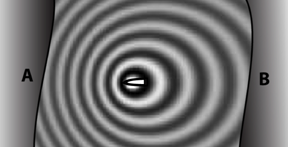- 1610: Galileo
- 1676: Ole Rømer
- 1687: Isaac Newton
- 1781: William Herschel
- 1838: Friedrich Bessel
- 1861: William and Margaret Huggins
- 1912: Henrietta Leavitt
- 1917 Einstein
- 1920: Harlow Shapley
- 1929 Edwin Hubble
- 1948: Ralph Alpher
- 1949: Fred Hoyle
- 1963: Maarten Schmidt
- 1964: Arno Penzias and Robert Wilson
- 1978: Vera Rubin and Kent Ford
- 1989: Margaret Geller and John Huchra
- 1992: John Mather and George Smoot
- 1995: Robert Williams
- 1998: Saul Perlmutter and Brian Schmidt
- 2010: Wendy Freedman
Dopper Shift
 Children provide an excellent example of the Doppler shift when they mimic the sound of a racing car whizzing past the grandstand. Although the sound of the engine is constant, the pitch appears to get higher as the car approaches and lower as the car races away. The effect is named for Christian Doppler who explained the phenomenon in 1842. The effect works the same way for sound waves, water waves and light waves. It is easiest to illustrate using water waves as shown at right.
Children provide an excellent example of the Doppler shift when they mimic the sound of a racing car whizzing past the grandstand. Although the sound of the engine is constant, the pitch appears to get higher as the car approaches and lower as the car races away. The effect is named for Christian Doppler who explained the phenomenon in 1842. The effect works the same way for sound waves, water waves and light waves. It is easiest to illustrate using water waves as shown at right.
Imagine an observer at the side of a lake in position A. The observer sees a rowboat approaching. Each time the oars are dipped in the water the boat produces a wave. Since the boat is moving towards the observer at A, the waves appear to be compressed. An observer at B sees the waves stretched out as the boat pulls away.
For sound waves the compression is perceived as a higher pitch, while stretching the waves is perceived as a lower pitch. For light waves the compression due to an approaching object produces a shift toward the blue end of the spectrum, while stretching the waves due to a receding object is produces a shift toward the blue end of the spectrum. The amount that the light of a star is shifted toward the red or blue end of the spectrum provides an excellent estimate of how fast a star or galaxy is approaching (blue shift) or receding (red shift).
For an animation of Doppler Shift see the following links:
http://webphysics.davidson.edu/applets/Doppler/Doppler.html
http://paws.kettering.edu/~drussell/Demos/doppler/doppler.html